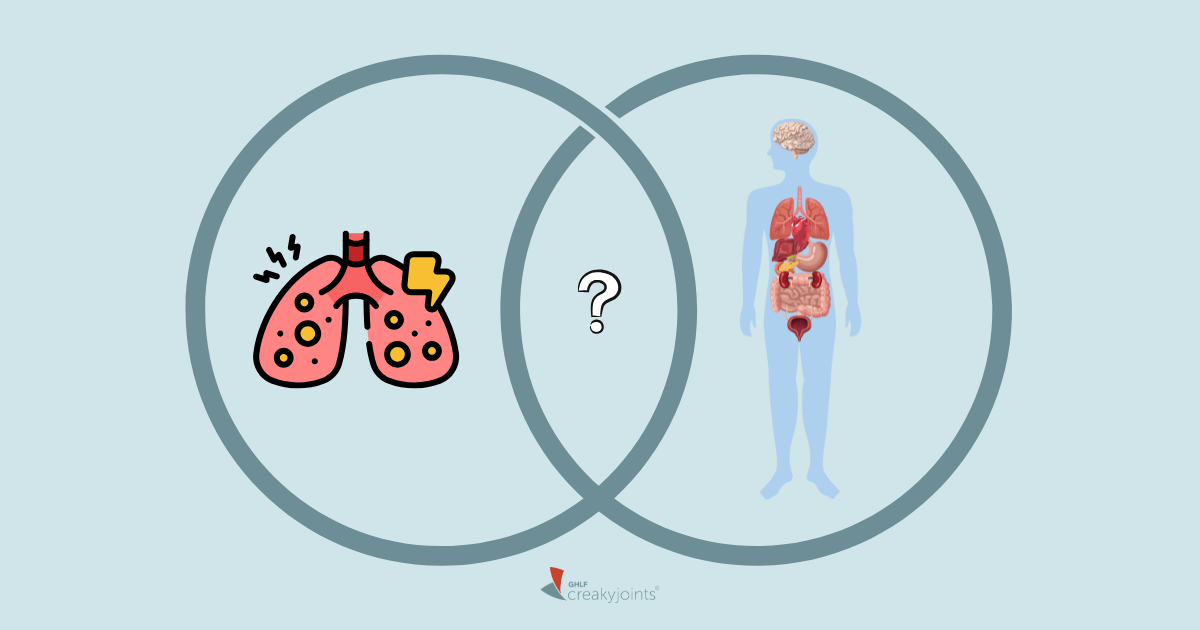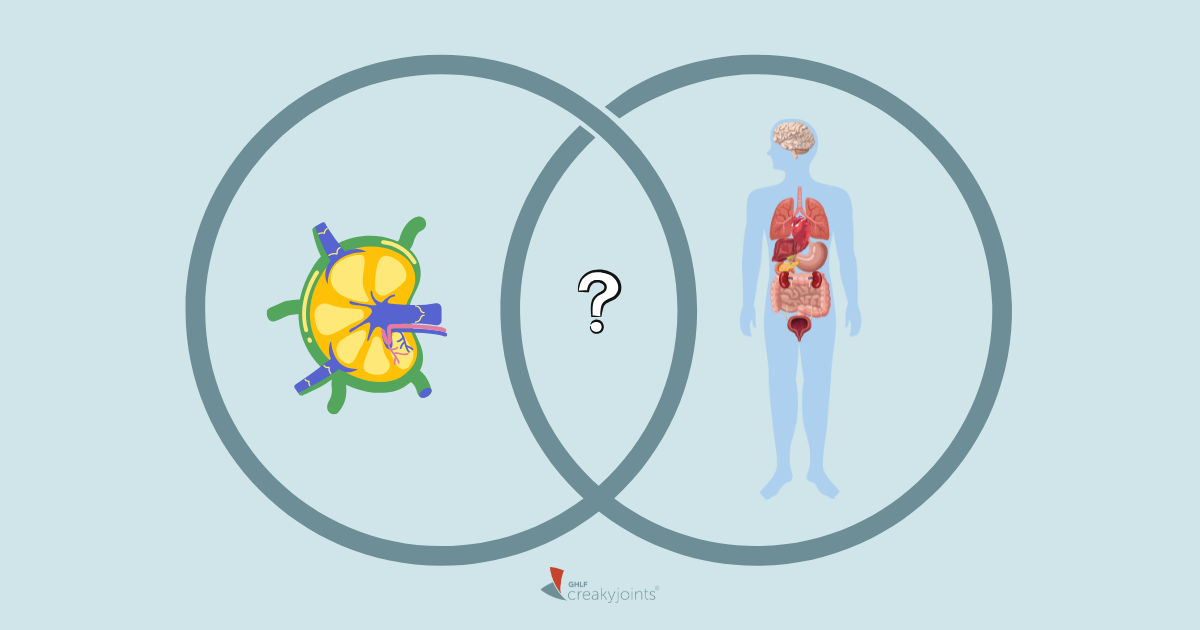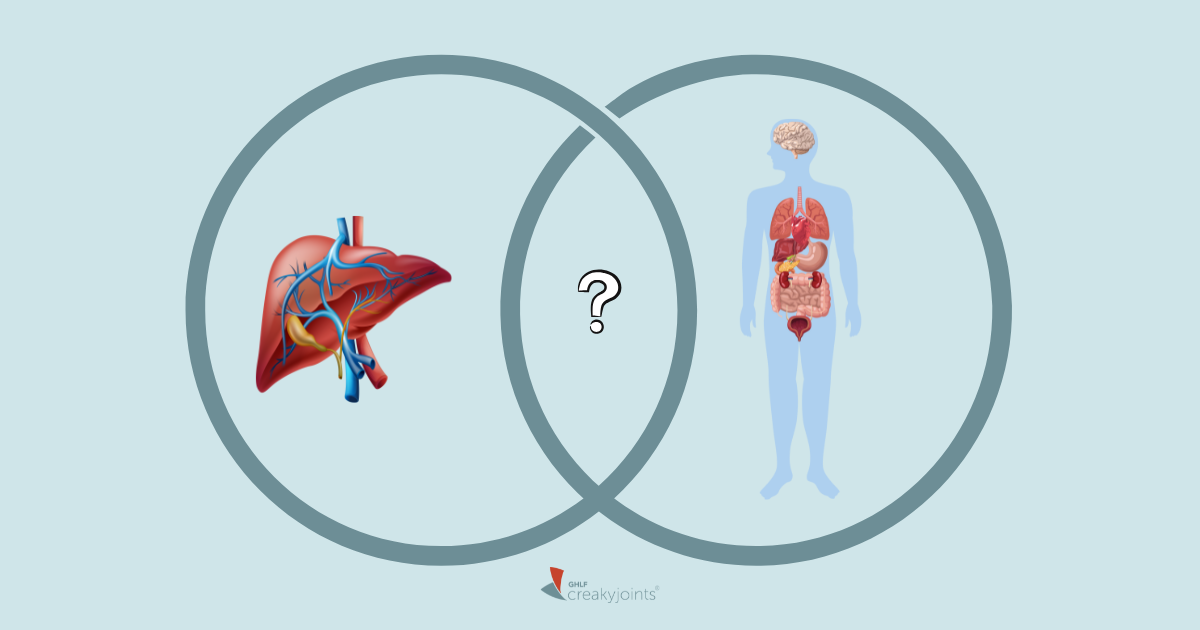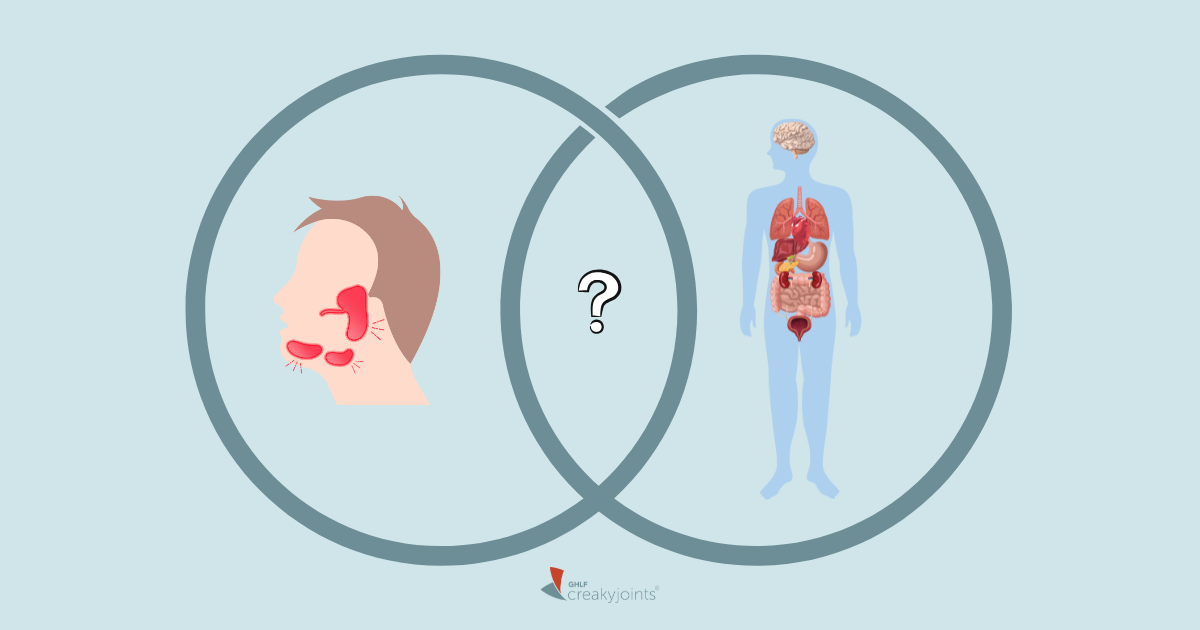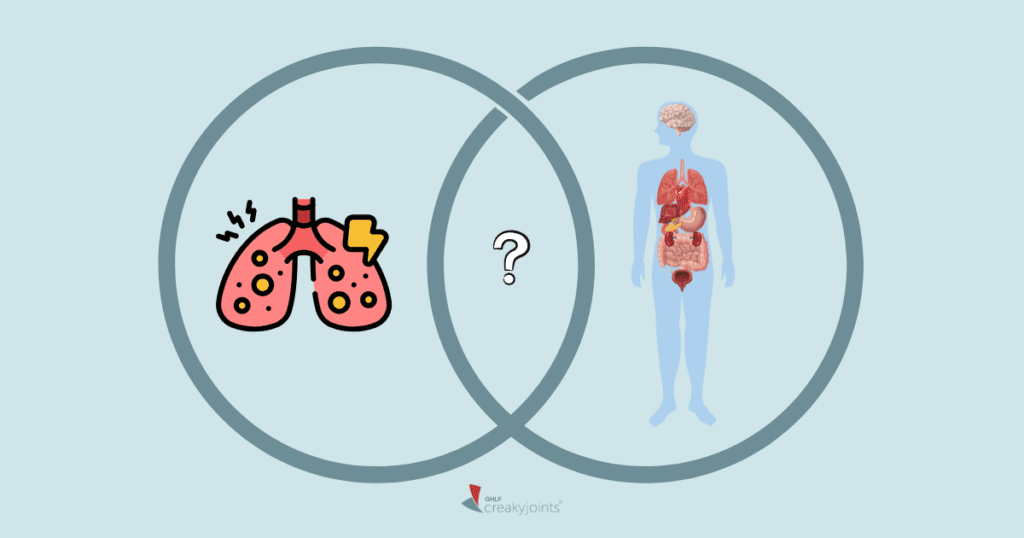

If you’ve been told you have sarcoidosis, it might feel like you finally have answers. But for some people, a different condition could be the real cause: Immunoglobulin G4-related disease, or IgG4-Related Disease (IgG4-RD).
What started as a mountain biking accident in June 2020 quickly became a year-long medical mystery for Andy Provencher. While recovering from broken ribs and a collapsed lung, ER scans revealed unexpected shadows and masses in his lungs—raising fears of aggressive cancer.
Doctors suspected several conditions, including Castleman’s disease and sarcoidosis, an inflammatory disease that can cause lung and lymph node involvement. As tests eventually ruled out cancer, sarcoidosis remained a strong possibility, but uncertainty lingered. A lymph node biopsy came back negative for malignancy, yet doctors still considered lymphoma and other immune-related diseases.
For months, Andy saw countless specialists, undergoing test after test without clear answers. Sarcoidosis seemed plausible, but it didn’t fully explain his symptoms. Eventually, he was diagnosed with IgG4-RD — a rare condition often mistaken for sarcoidosis. His journey highlights the importance of persistent testing, second opinions, and self-advocacy in complex diagnoses.
Sarcoidosis and IgG4-RD share many similarities, including elevated immune proteins (hypergammaglobulinemia), inflammatory tissue growths, and involvement of areas like the lymph nodes, tear glands, salivary glands, brain lining (meninges), and lungs.
Let’s explore how sarcoidosis and IgG4-RD are alike, what makes them different, and why figuring out the right diagnosis matters.
What Is Sarcoidosis?
Sarcoidosis, which affects 60 per 100,000 U.S. adults, is a rare disease that causes tiny clumps of inflammatory cells, called granulomas, to form in one or more of your organs. Granulomas often form in the lungs and lymph nodes but can also involve the skin, eyes, and heart. Sarcoidosis can look very different from person to person. Some people have no symptoms or only mild ones, while others can become seriously ill. The symptoms you experience depend on which part of your body is affected.
Common symptoms of sarcoidosis include:
- Fever
- Coughing, sometimes coughing up blood
- Shortness of breath
- Swollen lymph nodes
- Skin rashes or bumps, often reddish or purple
- Eye irritation, redness, or blurred vision
- Fatigue and weight loss
- Painful swollen joints
What is IgG4-RD, and which symptoms are similar to sarcoidosis?
IgG4-related disease (IgG4-RD) is a rare immune disease where certain immune cells produce excessive amounts of a protein called IgG4. This leads to chronic inflammation and tissue damage. Like sarcoidosis, IgG4-RD can affect multiple organs and create masses or swelling in affected areas, making the two conditions look alike.
Symptoms of IgG4-RD that may overlap with sarcoidosis include:
- Swelling or lumps in the neck from enlarged lymph nodes or salivary glands
- Persistent cough or breathing difficulties (when lungs are affected)
- Fatigue and unexplained weight loss
- Symptoms specific to the affected organ, such as abdominal discomfort or jaundice if the pancreas or bile ducts are involved
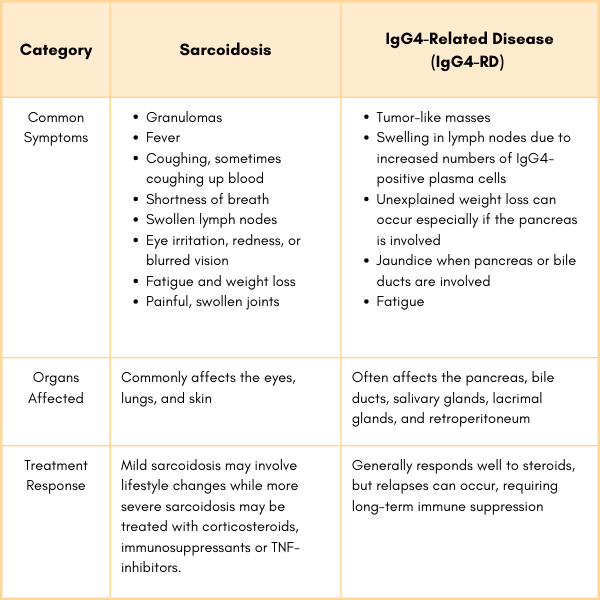

Why is IgG4-RD misdiagnosed as sarcoidosis?
IgG4-RD and sarcoidosis share many symptoms, including granuloma formation and organ involvement. Additionally, both diseases are rare, and some doctors may not be familiar with IgG4-RD.
While imaging tests like PET/CT scans and bloodwork can provide clues, a definitive diagnosis relies on a tissue biopsy. Examining tissue samples under a microscope is also crucial for ruling out other conditions that may look similar, such as lymphoma.
In a study of patients with diagnosed or suspected sarcoidosis, one person was initially told they had sarcoidosis but didn’t receive the correct diagnosis—IgG4-related disease—until seven years after their first symptoms appeared. During those years, they dealt with complications affecting their nervous system, pancreas, lungs, and skin before finally getting the right diagnosis and proper care.
How is Sarcoidosis Different from IgG4-Related Disease (IgG4-RD)?
While sarcoidosis and IgG4-RD share similarities, they are fundamentally different in terms of their causes, disease mechanisms, and the way they appear under a microscope.
What Diagnostic Tests or Imaging Help Differentiate Sarcoidosis and IgG4-RD?
Because of their similarities, specific diagnostic tests and imaging studies are critical for distinguishing sarcoidosis from IgG4-RD. Doctors can determine whether a patient’s symptoms are due to sarcoidosis or IgG4-RD by combining blood tests, imaging studies, and tissue biopsies. Early and accurate diagnosis is essential to start the most effective treatment and prevent complications. If you feel unsure about your diagnosis, asking your doctor about these tests can help clarify your condition.
Blood Tests:
IgG4-RD: Blood tests can measure IgG4 levels, which are often elevated in IgG4-RD but are typically normal in sarcoidosis.
Sarcoidosis: May show elevated calcium levels or markers of inflammation like ACE (angiotensin-converting enzyme).
Biopsy and Tissue Analysis:
Sarcoidosis: Pathologists look for well-defined granuloma.
IgG4-RD: Tissue may show immune cells rich in IgG4 and fibrosis (scarring).
Imaging Studies:
Sarcoidosis: Chest X-rays or CT scans often show enlarged lymph nodes or lung involvement with patterns specific to granulomas. PET/CT scans can detect active inflammation in various organs.
IgG4-RD: PET/CT scans can identify inflammation but may reveal specific patterns such as swelling in the pancreas, salivary glands, or other characteristic areas. An MRI can show detailed images of organ involvement, particularly in the bile ducts or retroperitoneum.
Emerging tools like flow cytometry and advanced imaging techniques, such as full-field optical coherence tomography (FF-OCT), may help detect subtle differences in tissue structure, offering more insight into diagnosing complex conditions.
Questions to Ask Your Doctor
If you’ve been diagnosed with sarcoidosis but something feels off and you are wondering if it might actually be IgG4-RD, here are questions you can ask your doctor:
Could my symptoms be IgG4-RD?
How would treatment change if I have IgG4-RD instead of sarcoidosis?
Are there any specific signs in my imaging scans that suggest IgG4-RD instead of sarcoidosis?
Do I have any organ involvement that is more common in IgG4-RD than in sarcoidosis?
Would it be helpful to see a specialist, such as a rheumatologist or immunologist, to explore the possibility of IgG4-RD?
Are there other blood tests or biomarkers that could help differentiate between sarcoidosis and IgG4-RD?
How do my current symptoms compare to what’s typically seen in IgG4-RD?
Could my response (or lack of response) to sarcoidosis treatment be a clue that I might have IgG4-RD instead?
If I have both conditions, how would that affect my treatment plan?
Advocating for the Right Diagnosis
Getting an accurate diagnosis can be a long and frustrating journey, especially when conditions like sarcoidosis and IgG4-related disease share similar symptoms. If you suspect your diagnosis may not tell the full story, know that you have the power to take an active role in your healthcare.
Steps to Take with Your Doctor:
- Ask the tough questions. If your symptoms don’t fully align with sarcoidosis or if treatments aren’t working as expected, don’t hesitate to ask your doctor whether further testing for IgG4-RD is needed. A second opinion can also provide clarity.
- Track your symptoms and test results. Keep a record of your symptoms, flare patterns, and previous lab and imaging results to help identify patterns that may point to IgG4-RD or another underlying condition.
- Seek the right specialists. Seeing a rheumatologist, immunologist, or pulmonologist familiar with IgG4-RD can be key to getting the right diagnosis and treatment plan. These specialists can help differentiate between overlapping conditions and guide next steps.
Advocating for yourself in the diagnostic process can feel daunting, but persistence is key. If you have questions or doubts about your diagnosis, keep pushing for answers. You deserve clear, accurate information about your health—and the right care to match.
Learn More About IgG4-RD
Click here to get more information on IgG4-RD including a guide to getting diagnosed, managing symptoms, and treatment options.
This article was made possible with support from Amgen.
Baker MC, Cook C, Fu X, Perugino CA, Stone JH, Wallace ZS. The Positive Predictive Value of a Very High Serum IgG4 Concentration for the Diagnosis of IgG4-Related Disease. Journal of Rheumatology. 2023. DOI: https://doi.org/10.3899/jrheum.220423.
Baughman, R.P., et al. Sarcoidosis in America Analysis Based on Health Care Use. Annals of American Thoracic Society. 2016. DOI: https://doi.org/10.1513/AnnalsATS.201511-760OC.
Cler SJ, et al. When inflammation is not just inflammation-A review of systemic diseases of the nose and sinuses part 1: IgG4-related disease and sarcoidosis. American Journal of Otolaryngology. 2024 Doi: https://doi.org/10.1016/j.amjoto.2023.104213.
Matto V, Shah R, Ouyang J, et al. Case Report: Sarcoidosis in Patient with History of IgG4-Related Disease. The Rheumatologist. September 14, 2021. https://www.the-rheumatologist.org/article/case-report-sarcoidosis-in-patient-with-history-of-igg4-related-disease/.
Provencher, Andrew. Personal Interview. February 7, 2025.
Tsushima, K., et al. Elevated IgG4 Levels in Patients Demonstrating Sarcoidosis-Like Radiologic Findings. Medicine. 2011. DOI: https://doi.10.1097/MD.0b013e31821ce0c8.


